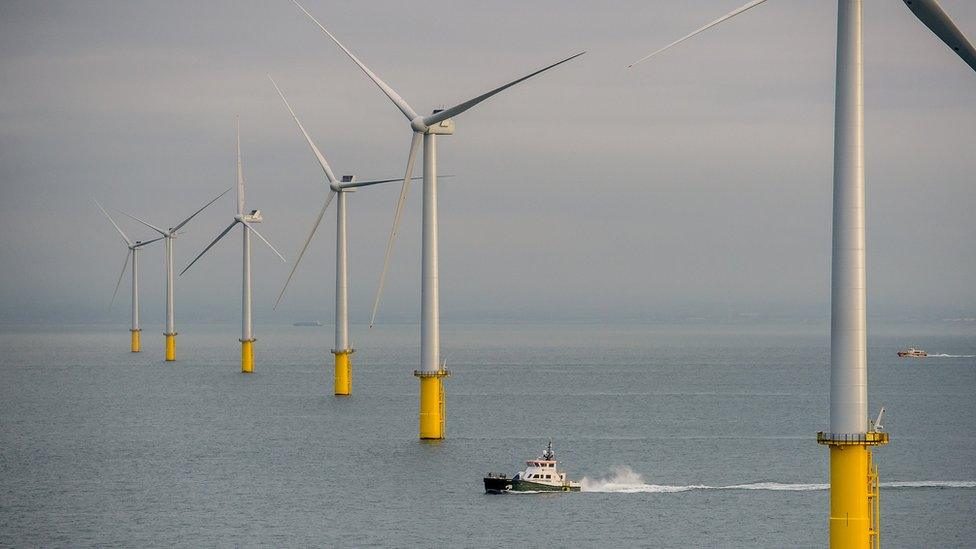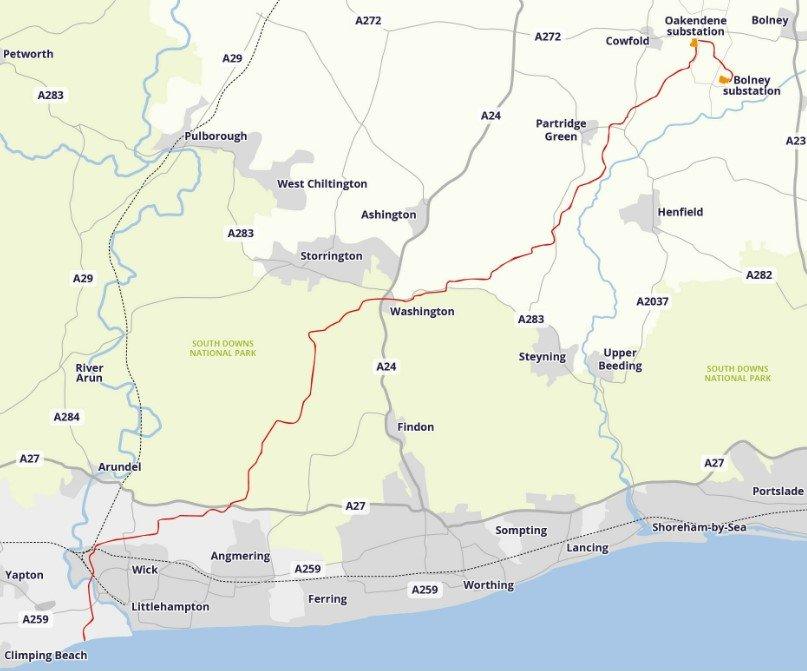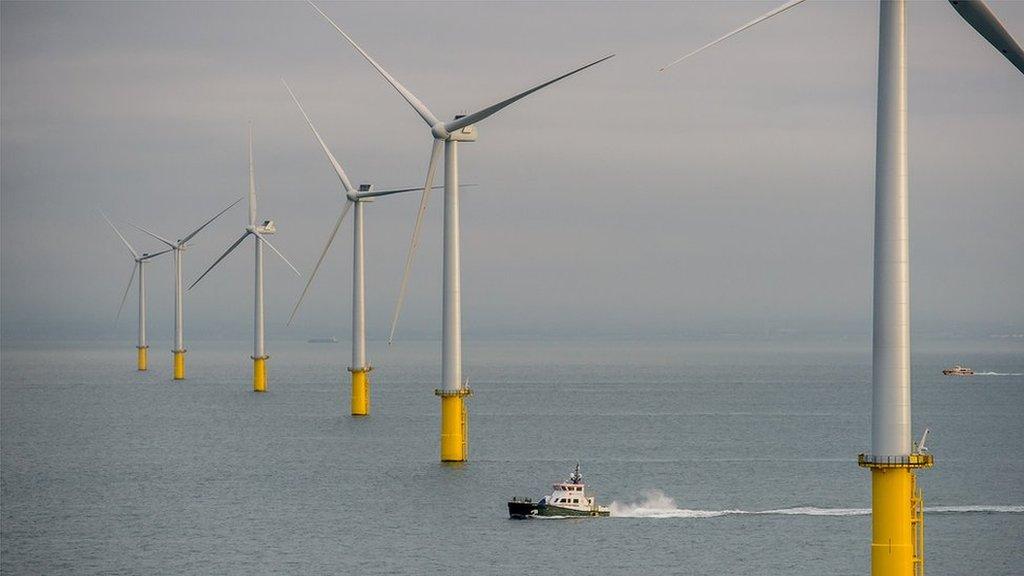Rampion 2: Offshore windfarm team selects final cable route
- Published

The wind farm extension could see an extra 90 turbines built off the Sussex coast
A cable route to transport power from an offshore windfarm to the national network has been chosen following public consultations.
The Rampion 2 project team said a route was needed to take electricity from the planned new turbines off the West Sussex coast to the network at Bolney.
Operator RWE said the cables would be buried underground and the land returned to its former condition.
Should plans receive consent, the windfarm could be operational by 2030.
Rampion 2, an expansion on the existing windfarm which opened in 2018, could generate enough electricity to power the equivalent of more than one million homes, according to RWE.
Ecology protection
Chris Tomlinson from RWE said consultations on alternative cable routes were driven by public feedback, plus ongoing engineering and environmental assessments.
The eastern route has been chosen for the route section from Lyminster to Sullington Hill, he said.

RWE said the route was chosen following public feedback, along with environmental and engineering assessments
This was mainly to protect ecology, avoiding the Warningcamp Hill and New Down Local Wildlife Site, plus ancient woodland.
It also reflected feedback from the villages of Crossbush, Burpham and Wepham, RWE said.
Secondly, at the northern end of the eastern route, option 1d has been selected to reconnect to the original route at Sullington Hill.
RWE said this had less impact on businesses, affected fewer hedgerows and was a more direct route.
Mr Tomlinson said the goal throughout had been to identify a route which "meets the needs of local communities, wildlife and the environment, while providing an economic connection solution."
Should the project achieve consent, RWE said construction could start around 2026-27, with the windfarm fully operational by 2030.

Follow BBC South East on Facebook, external, on Twitter, external, and on Instagram, external. Send your story ideas to southeasttoday@bbc.co.uk.
Related topics
- Published3 February 2022

- Published17 October 2022

- Published21 September 2021

- Published20 November 2019

- Published7 November 2019
